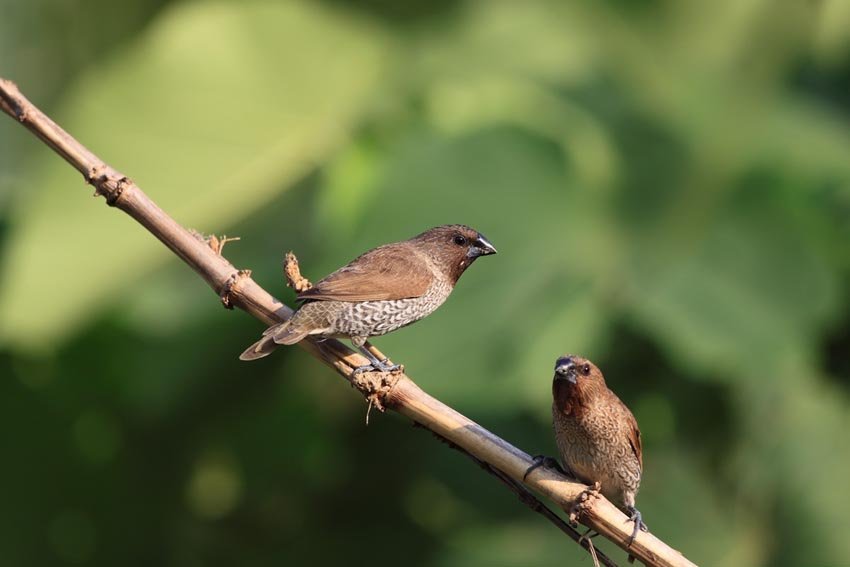Nutmeg Mannikin

Nutmeg Mannikin Overview
Nutmeg manikins are common on all main Hawaiian islands from sea level to the mountains and alpine regions (on the Big Island). They are native to Southeast Asia and were introduced to Hawaii around 1865. They are also known as spotted munia or ricebird.
Adult males and females are similar in appearance. Adult birds have are brown with a chestnut-colored throat and a dark brown face. Their sides and breast is gray with dark accents. Their belly is whitish. They have a dark bill and legs.
Their diet includes a variety of seeds. They typically stay together in large flocks. Nests are built in a low tree or shrub and between three and four white eggs are produced each breeding season.
Frequently Asked Questions
Where can Nutmeg Mannikins be found in Hawaii?
They are found on all main Hawaiian Islands, from coastal areas to mountainous and alpine regions, especially on the Big Island.
Are Nutmeg Mannikins native to Hawaii?
No. They are native to Southeast Asia and were introduced to Hawaii around 1865. They have since become widespread throughout the islands.
What do Nutmeg Mannikins look like?
They are small brown birds with a chestnut-colored throat, dark brown face, gray sides and breast with dark accents, a whitish belly, and dark bill and legs. Males and females look alike.
What do Nutmeg Mannikins eat?
Their diet consists mainly of seeds, including grasses and grains. They are often seen foraging in open areas and fields.
How and where do they nest?
Nests are built in low shrubs or trees. They usually lay three to four white eggs per breeding season and tend to nest in colonies or near others in their flock.








